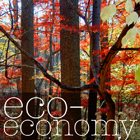
|
WIND POWER SET TO BECOME WORLD'S LEADING ENERGY SOURCE Lester R. Brown :: 25 June 2003 In 1991, a national wind resource inventory taken by the U.S. Department of Energy startled the world when it reported that the three most wind-rich states —North Dakota, Kansas, and Texas— had enough harnessable wind energy to satisfy national electricity needs. Now a new study by a team of engineers at Stanford reports that the wind energy potential is actually substantially greater than that estimated in 1991. Advances in wind turbine design since 1991 allow turbines to operate at lower wind speeds, to harness more of the wind's energy, and to harvest it at greater heights —dramatically expanding the harnessable wind resource. Add to this the recent bullish assessments of offshore wind potential, and the enormity of the wind resource becomes apparent. Wind power can meet not only all U.S. electricity needs, but all U.S. energy needs. In a joint assessment of global wind resources called Wind Force 12, the European Wind Energy Association and Greenpeace concluded that the world's wind-generating potential —assuming that only 10 percent of the earth's land area would be available for development— is double the projected world electricity demand in 2020. A far larger share of the land area could be used for wind generation in sparsely populated, wind-rich regions, such as the Great Plains of North America, northwest China, eastern Siberia, and the Patagonian region of Argentina. If the huge offshore potential is added to this, it seems likely that wind power could satisfy not only world electricity needs but perhaps even total energy needs. (See data http://www.earth-policy.org/Updates/Update24_data.htm) Over the last decade wind has been the world's fastest-growing energy source. Rising from 4,800 megawatts of generating capacity in 1995 to 31,100 megawatts in 2002, it increased a staggering sixfold. Worldwide, wind turbines now supply enough electricity to satisfy the residential needs of 40 million Europeans. Wind is popular because it is abundant, cheap, inexhaustible, widely distributed, climate-benign, and clean--attributes that no other energy source can match. The cost of wind-generated electricity has dropped from 38¢ a kilowatt-hour in the early 1980s to roughly 4¢ a kilowatt-hour today on prime wind sites. Some recently signed U.S. and U.K. long-term supply contracts are providing electricity at 3¢ a kilowatt-hour. Wind Force 12 projected that the average cost per kilowatt hour of wind-generated electricity will drop to 2.6¢ by 2010 and to 2.1¢ by 2020. U.S. energy consultant Harry Braun says that if wind turbines are mass-produced on assembly lines like automobiles, the cost of wind-generated electricity could drop to 1-2¢ per kilowatt hour. Although wind-generated electricity is already cheap, its cost continues to fall. In contrast with oil, there is no OPEC to set prices for wind. And in contrast to natural gas prices, which are highly volatile and can double in a matter of months, wind prices are declining. Another great appeal of wind is its wide distribution. In the United States, for example, some 28 states now have utility-scale wind farms feeding electricity into the local grid. While a small handful of countries controls the world's oil, nearly all countries can tap wind energy. Denmark leads the world in the share of its electricity from wind —20 percent. In terms of sheer generating capacity, Germany leads with 12,000 megawatts. By the end of 2003, it will have already surpassed its 2010 goal of 12,500 megawatts of generating capacity. For Germany, this rapid growth in wind power is central to reaching its goal of reducing carbon emissions 40 percent by 2020. Rapid worldwide growth is projected to continue as more countries turn to wind. In addition to the early leaders —Denmark, Germany, Spain, and the United States— many other countries have ambitious plans, including the United Kingdom, France, Brazil, and China. In densely populated Europe, the off-shore potential for developing wind is also being exploited. Denmark is now building its second off-shore wind farm, this one with 160 megawatts of generating capacity. Germany has some 12,000 megawatts of off-shore generating capacity under consideration. Wind power is now a viable, robust, fast-growing industry. Cheap electricity from wind makes it economical to electrolyze water and produce hydrogen. Hydrogen is the fuel of choice for the highly efficient fuel cells that will be used widely in the future to power motor vehicles and to supply electricity, heating, and cooling for buildings. Hydrogen also offers a way of storing wind energy and of transporting it efficiently by pipeline or in liquefied form by ship. With the wind industry's engineering know-how and manufacturing experience, it would be relatively easy to scale up the size of the industry, even doubling it annually for several years, if the need arose. If, for example, crop-shrinking heat waves raise food prices and generate public pressure to quickly reduce carbon emissions by replacing coal and oil with wind and hydrogen, it will be possible to do so. If the need arises to shift quickly to hydrogen-fueled automobiles, this can be done by converting For energy investors, growth in the future lies with wind and the hydrogen produced with cheap wind-generated electricity. Solar cell sales are growing at over 30 percent a year and are likely to supply much of the electricity for the 1.7 billion people who are still without electricity, most of them living in developing country villages. But solar cells are still too costly to supply the vast amounts of energy required to power a modern economy. World coal burning peaked in 1996 and has fallen 2 percent since then. It is a fading industry, not an exciting investment prospect. Nor is oil particularly promising, since world production is not likely to expand far beyond current levels. Production of natural gas, the cleanest and least climate-disruptive of the fossil fuels, is likely to continue expanding for a few more decades, fortuitously developing an infrastructure that can be adapted for hydrogen. Nuclear power generation is expected to peak soon, when the large number of aging plants that will be closing down will exceed the small number of plants that are under construction. The energy future belongs to wind. The world energy economy became progressively more global during the twentieth century as the world turned to oil. It promises to reverse direction and become more local during the twenty-first century as the world turns to wind, wind-generated hydrogen, and solar cells. Wind and wind-generated hydrogen will shape not only the energy sector of the global economy but the global economy itself. Originally Published: June 25, 2003 |
||||||||||||||||||||||
|
|||||||||||||||||||||||











